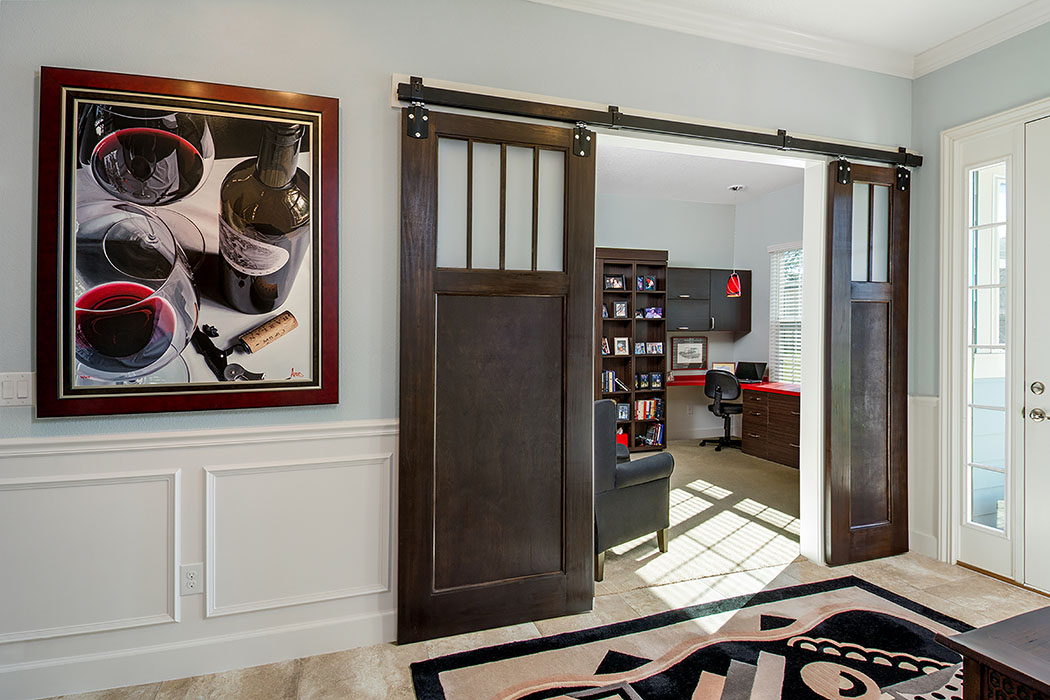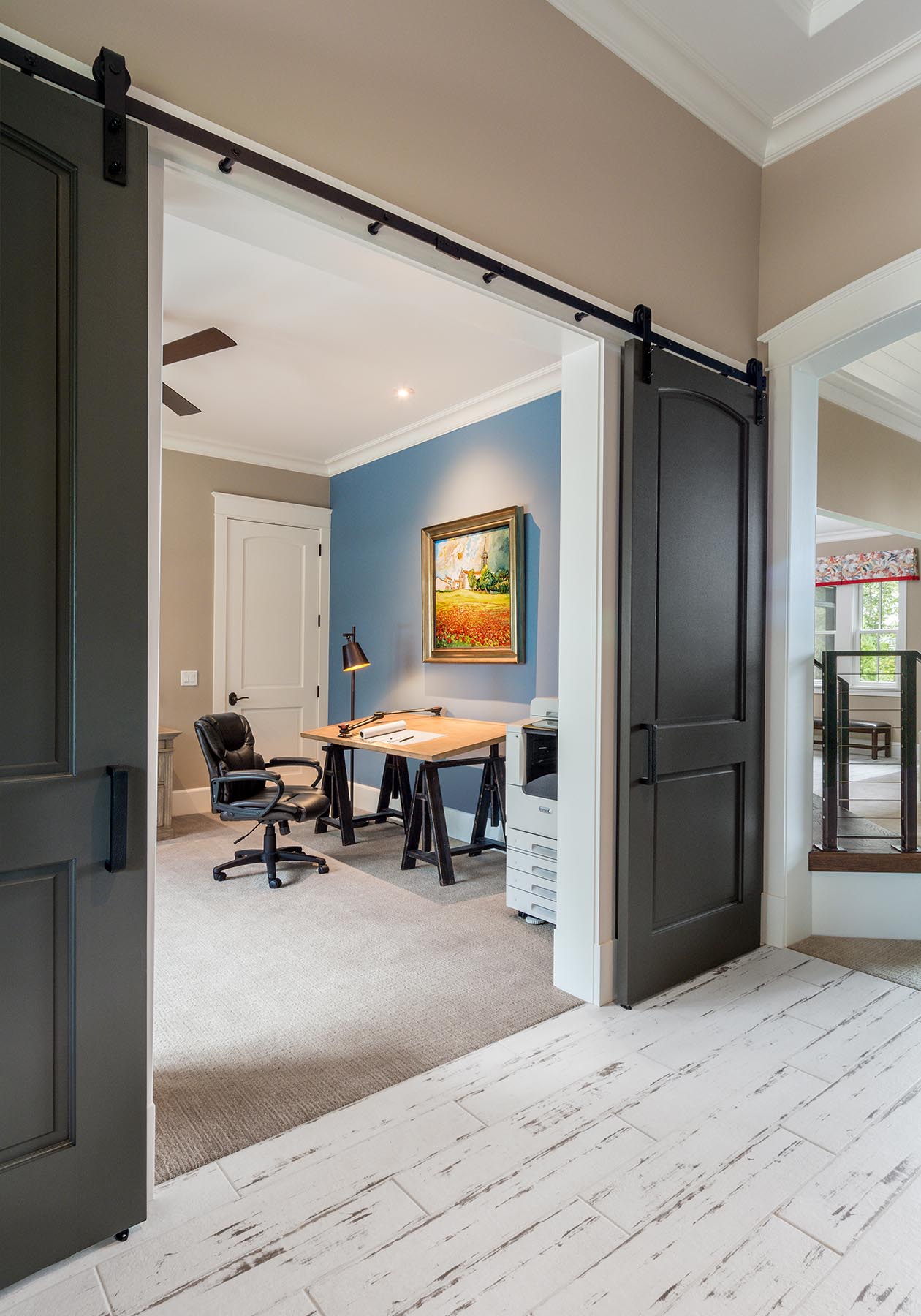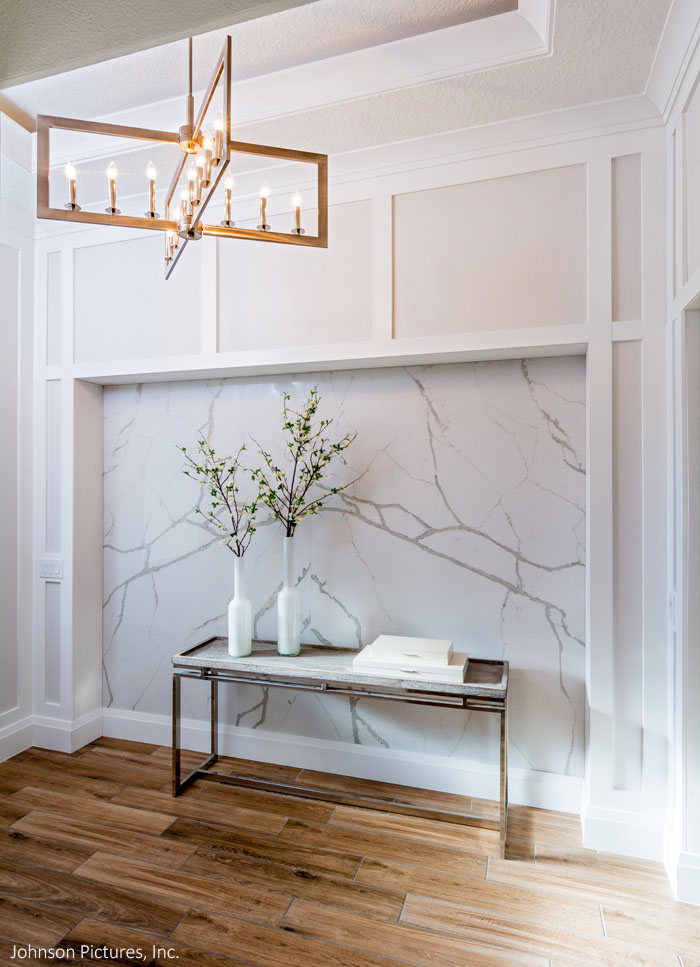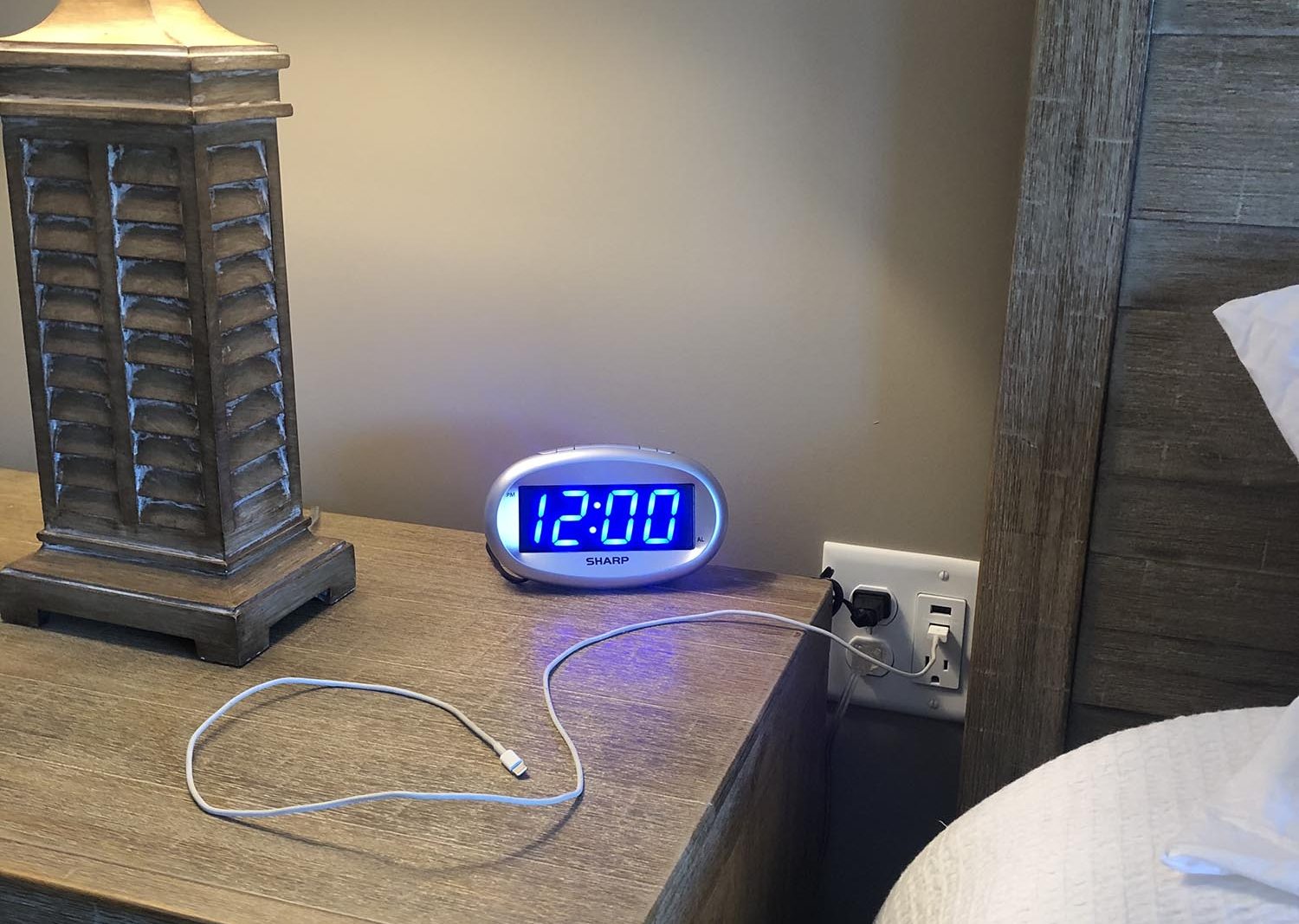Sometimes you need to step back and ask why. Why are things the way they are? Why do we continue to design the same way? Why do we put up with things because that’s the way we’ve always done it? Sometimes, there is a good answer for “why”. But there are other times where the “why” is no longer relevant or applicable to our lives. As humans, we are amazing at adapting. We adapt to our built environment and make things work. But what if we as designers and builders adapted our designs to the way people actually live today – not pre-pandemic, not the nineties and not roaring twenties.
The Home Office
Let’s start with the home office. Traditionally, we’ve seen this space right off the foyer. If you’re lucky, you have double doors. I say “lucky” because a lot of builders consider these doors as an option. Clearly, they haven’t seen how messy my office is. I thought I was clever when I installed custom barn doors to close off my office. Nice look, but acoustically useless – I didn’t see Zoom coming and my dogs have no regard for my meetings.
But why is it off the foyer in the first place? Certainly not because I receive visitors into my office. I believe this is a remnant of what I call the “show den”. The fancy illusion of power and importance so that guests will know just how important the occupant of that space is. Of course, the show den with the big desk facing the foyer is as relevant as a dinosaur. Where is the computer? Can you face the foyer and the computer at the same time? Computers have cords and monitors and stuff – none of which was designed to look good from the back side.
One theory is that the home office replaced the formal living room or dining that was in this location. Builders and designers need to put something there by the front door. You couldn’t just arrive in the main living area – or could you? After all, why can’t the entry have its own moment? What if we put a bedroom there that didn’t open to the foyer? Are we that impatient that we can’t take a few more steps to “arrive”? Jay Kallos with Ashton Woods describes it as “discovery” – rather that being in your face the moment you walk in the door.
In a recent Design Bites – 15 design ideas in 15 minutes, we learn from Deana Vidal that buyers don’t want the office off the foyer. Instead, they prefer it in the back, by the master or on the second floor. Both places are out of sight from visitors. This way, unfinished projects can wait until the next day to complete and the office doesn’t need to get cleaned up each day.
Outlet Placement
Why are outlets 18” above the floor? What in our house is 18” off the floor? It’s too high to be hidden in the base board and too low to make it convenient to anyone to access with the exception of a toddler – who is the last person you want having access to an outlet. Now take that same outlet, 18” off the floor and put it behind that great big giant desk. Naturally, the desk has a back panel to shield your eyes from the sea of power cords. What happens when you need to access the plug? In my case, I would need to call three men and a truck to move my desk just to plug something new in. Why not locate the outlets where it is convenient to the user – say 36” above the floor. Then the access length of the cord can drop behind the desk. Let’s acknowledge we need power, make it easy on the user and then we can address the unsightliness of the plugs.
Moving to the bedrooms, let’s start putting the bedside outlets where we can easily access them. And while we’re at it, one duplex outlet on each side of the bed is not enough. It may be “to code” but think of how many things we plug in at night. Just looking at my own nightstand:
• Lamp
• Digital clock
• Cell phone/alarm clock
• Zero gravity bed
• Mattress pad warmer
Of course, we have been asking “why” for the past 20 years.
• Why do we keep designing living rooms for a phantom living room enthusiast who simply doesn’t exist?
• Why are we entering our homes through our laundry room?
• Why do we need a formal dining room and a breakfast room when we could have one beautifully design space that replaces both?
It’s important to stop from time to time and ask yourself if the way it has always been done is still the way it should be done. The process of answering these questions often leads to the right kind of innovation. Let’s keep housing moving forward.
Categorized in: Uncategorized
This post was written by Housing Design Matters





